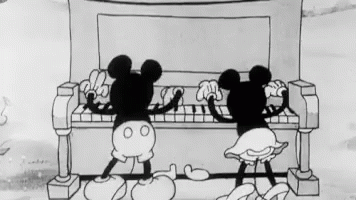Suspended in a city of night
Keys
A key is a group of pitches that belong together. The group of pitches are exactly the same as the scale notes, which will be explained in more detail in an upcoming lesson, however the term ‘key’ itself is simply used to identify the name of that group of notes in no particular order, through the tonic of the group.
The tonic of the group is the note that is the tonal centre of the notes and although there is a much more scientific reason why it is the tonal center, for all intents and purposes, it is the note that has the strongest pull towards it and that all other notes seem to want to resolve to. In fact, there is a particular interval each other note has to the tonic therefore as the reference note, it is also the ‘key’ note and therefore used to name the group. One example would be : The ‘key’ of C major contains the notes C, D, E, F, G, A and B. Therefore the universe of notes that can be used together that would compliment C as their tonal center are C, D, E, F, G, A and B. The ‘key’ of C major contains all natural notes and no other key is made up of the same notes.
On a piano, this would mean ‘all white keys’ therefore if you were to play a melody using all the white keys of a piano, without touching any black keys (which would be sharps or flats), you would be playing in what is called key of C Major. Resolving your melody on the C note would feel final compared to other notes, although we’ll get into exceptions later.
I don’t exactly know why the term ‘key’ is specifically used to describe this group of notes that belong together or to refer to the tonic, however some things just need to be memorized without a better explanation.
Note that the group of notes belonging to the key are also the notes used to create each of the seven chords that belong to a key. Using any note that is outside of the group means that either an exception has occurred, or an error has been made. More on this later. The ‘sharps’ or ‘flats’ are called ‘accidentals’ by the way. There is no particular reason that I’m aware of as to why they are referred to as ‘accidents’ as ‘accidentals’ are required to create the correct patterns of notes in different keys. If I do ever figure it out, I’ll update the portion of this course to provide that explanation for you.
Pun Of The Week
Music as a language
A year to the day…
Victor Wooten on developing your musicianship
Divinity Club
Melody & Harmony
Melodies contain single notes of varying in pitches that belong to a particular scale, however they may also contain intervals and chords as well.
This next lesson is an introduction to intervals, scales, and chords however each of these topics will be individually described in more detail over the next couple of lessons as we progress in complexity.
Intervals is a term used to describe the distance between two notes with relation to how far up or down a note is from another note. Unlike the topic of time that describes a note’s duration and its placement from left to right within a measure, intervals describe a notes distance above or below another note. If an object is 5 steps away from another object, intervals would describe if it is 5 steps up or 5 steps down from the original note and whether they are big steps or small steps. The two notes can be spaced diagonally away from one another as in a staircase where one notes is 5 steps up or down from the other, or they may be vertically stacked as in a ladder. More on this a little later.
Scales are a set of 2 or more intervals that are spaced diagonally away from one another as in a staircase. Scales can range from 3 to 12 individual notes and represent the universe of notes available for a musician to select from when composing music in a specific key*. Scale notes may have either an alphabetical letter from A to G or the Latin La, Si, Do, Re, Mi, Fa, Sol as their names. When speaking generally, or when not referring to a specific key, the scale notes, called ‘scale degrees’ are simply named using Arabic/Western numerals from 1 to 8 (in a key with 8 notes). The fifth note of a scale for example is the 5th scale degree. The third note of a scale is the 3rd scale degree and so on.
Chords are a set of 2 or more intervals (consisting of 3 or more notes) that are vertically stacked as in a ladder. All the notes of a chord are played at the same time. There are usually 7 chords within a key that has 8 notes and they too are numbered similar to scales. The difference being that rather than using Arabic/Western numerals, chords use Roman numerals instead. The seven chords would therefore be : I, ii, iii, IV, V, vi, vii. The fourth chord would be IV while the sixth chord would be vi. Notice that I used uppercase for I, IV and V but lowercase for ii, iii, vi and vii. This is intentional and will be explained in more detail in the ‘chords’ chapter however it basically identifies the chord quality (major, minor, augmented, or diminished).





